| The Magic Flute | |
|---|---|
| Singspiel by W. A. Mozart | |
 The arrival of the Queen of the Night. Stage set by Karl Friedrich Schinkel for an 1815 production. | |
| Native title | Die Zauberflöte |
| Librettist | Emanuel Schikaneder |
| Language | German |
| Premiere |
30 September 1791 Theater auf der Wieden, Vienna |
The Magic Flute (German: Die Zauberflöte pronounced ), K. 620, is an opera in two acts by Wolfgang Amadeus Mozart to a German libretto by Emanuel Schikaneder. The work is in the form of a Singspiel, a popular form that included both singing and spoken dialogue. The work premiered on 30 September 1791 at Schikaneder's theatre, the Freihaus-Theater auf der Wieden in Vienna, just two months before the composer's premature death.
In the opera the Queen of the Night persuades Prince Tamino to rescue her daughter Pamina from captivity under the high priest Sarastro; instead, he learns the high ideals of Sarastro's community and seeks to join it. Separately, then together, Tamino and Pamina undergo severe trials of initiation, which end in triumph, with the Queen and her cohorts vanquished. The earthy Papageno, who accompanies Tamino on his quest, fails the trials completely but is rewarded anyway with the hand of his ideal female companion Papagena.
Contents
Composition
This section needs additional citations for verification. (September 2016) (Learn how and when to remove this template message) |
The opera was the culmination of a period of increasing involvement by Mozart with Schikaneder's theatrical troupe, which since 1789 had been the resident company at the Theater auf der Wieden. Mozart was a close friend of one of the singer-composers of the troupe, tenor Benedikt Schack (the first Tamino), and had contributed to the compositions of the troupe, which were often collaboratively written. Mozart's participation increased with his contributions to the 1790 collaborative opera Der Stein der Weisen (The Philosopher's Stone), including the duet ("Nun liebes Weibchen", K. 625/592a) among other passages. Like The Magic Flute, Der Stein der Weisen was a fairy-tale opera and can be considered a kind of precursor; it employed much the same cast in similar roles.
The libretto for The Magic Flute, written by Schikaneder, is thought by scholars to be based on many sources. Some works of literature current in Vienna in Schikaneder's day that may have served as sources include the medieval romance Yvain by Chrétien de Troyes, the novel Life of Sethos by Jean Terrasson, and the essay "On the mysteries of the Egyptians" by Ignaz von Born. The libretto is also a natural continuation of a series of fairy tale operas produced at the time by Schikaneder's troupe, including an adaptation of Sophie Seyler's Singspiel Oberon as well as Der Stein der Weisen. Especially for the role of Papageno, the libretto draws on the Hanswurst tradition of the Viennese popular theatre. Many scholars also acknowledge an influence of Freemasonry. For detailed discussion of sources see Branscombe (1991), as well as Libretto of The Magic Flute.
In composing the opera, Mozart evidently kept in mind the skills of the singers intended for the premiere, which included both virtuosi and ordinary comic actors asked to sing for the occasion. Thus, the vocal lines for Papageno—sung by Schikaneder himself—and Monostatos (Johann Joseph Nouseul) are often stated first in the strings so the singer can find his pitch, and are frequently doubled by instruments. In contrast, Mozart's sister-in-law Josepha Hofer, who premiered the role of the Queen of the Night, evidently needed little such help: this role is famous for its difficulty. In ensembles, Mozart skillfully combined voices of different ability levels.
The vocal ranges of two of the original singers for whom Mozart tailored his music have posed challenges for many singers who have since recreated their roles. Both arias of the Queen of the Night, "O zittre nicht, mein lieber Sohn" and "Der Hölle Rache kocht in meinem Herzen" require high F6, rare in opera. At the low end, the part of Sarastro, premiered by Franz Xaver Gerl, includes a conspicuous F2 in a few locations.
Premiere and reception
The opera was premiered in Vienna on 30 September 1791 at the suburban Freihaus-Theater auf der Wieden. Mozart conducted the orchestra, Schikaneder himself played Papageno, while the role of the Queen of the Night was sung by Mozart's sister-in-law Josepha Hofer.
On the reception of the opera, Mozart scholar Maynard Solomon writes:
Although there were no reviews of the first performances, it was immediately evident that Mozart and Schikaneder had achieved a great success, the opera drawing immense crowds and reaching hundreds of performances during the 1790s.
As Mozart's letters show, he was very pleased to have achieved such a success. Solomon continues:
Mozart's delight is reflected in his last three letters, written to Constanze, who with her sister Sophie was spending the second week of October in Baden. "I have this moment returned from the opera, which was as full as ever", he wrote on 7 October, listing the numbers that had to be encored. "But what always gives me the most pleasure is the silent approval! You can see how this opera is becoming more and more esteemed." … He went to hear his opera almost every night, taking along relatives.
The opera celebrated its 100th performance in November 1792, though Mozart did not have the pleasure of witnessing this milestone, as he had died 5 December 1791. The opera was first performed outside Vienna (21 September 1792) in Lemberg, then in Prague. It then made (Branscombe) "triumphal progress through Germany's opera houses great and small", and with the early 19th century spread to essentially all the countries of Europe—and eventually, everywhere in the world—where opera is cultivated.
As Branscombe documents, the earlier performances were often of highly altered, sometimes even mutilated, versions of the opera (see Ludwig Wenzel Lachnith). Productions of the past century have tended to be more faithful to Mozart's music, though faithful rendering of Mozart and Schikaneder's original (quite explicit) stage directions and dramatic vision continues to be rare; with isolated exceptions, modern productions strongly reflect the creative preferences of the stage director.
The Magic Flute is presently among the most frequently performed of all operas.
First publication
On 28 December 1791, three and a half weeks after Mozart's death, his widow Constanze offered to send a manuscript score of The Magic Flute to the electoral court in Bonn. Nikolaus Simrock published this text in the first full-score edition (Bonn, 1814), claiming that it was "in accordance with Mozart's own wishes" (Allgemeine musikalische Zeitung, 13 September 1815).
Themes
The Magic Flute is noted for its prominent Masonic elements, although some scholars hold that the Masonic influence is exaggerated. Schikaneder and Mozart were Freemasons, as was Ignaz Alberti, engraver and printer of the first libretto. The opera is also influenced by Enlightenment philosophy, and can be regarded as an allegory advocating enlightened absolutism. The Queen of the Night represents a dangerous form of obscurantism or, according to some, the anti-Masonic Roman Catholic Empress Maria Theresa, or, according to others, the contemporary Roman Catholic Church itself, which was also strongly anti-Masonic. Her antagonist Sarastro symbolises the enlightened sovereign who rules according to principles based on reason, wisdom, and nature. The story itself portrays the education of mankind, progressing from chaos (the serpent) through religious superstition (the Queen and Ladies) to rationalistic enlightenment (Sarastro and Priests), by means of trial (Tamino) and error (Papageno), ultimately to make "the Earth a heavenly kingdom, and mortals like the gods" ("Dann ist die Erd' ein Himmelreich, und Sterbliche den Göttern gleich"); this couplet is sung in the finales to both acts.
Modern audiences often find the prominent strains of misogyny and the casual racism in The Magic Flute problematic. Sarastro describes the Queen of the Night as usurping the rightful power of men (" a proud woman! A man must guide your hearts, for without him all women tend to step outside their own sphere of activity"), and her supposed 'feminine' vindictive hysteria serves as a foil for Sarastro's 'masculine' dignified reason. The perfidious villain Monostatos, meanwhile, is written as a Moor (African).
Roles
| Role | Voice type | Premiere cast, 30 September 1791 (conductor: Wolfgang Amadeus Mozart) |
|---|---|---|
| Tamino | tenor | Benedikt Schack |
| Papageno | baritone | Emanuel Schikaneder |
| Pamina | soprano | Anna Gottlieb |
| The Queen of the Night | coloratura soprano | Josepha Hofer |
| Sarastro | bass | Franz Xaver Gerl |
| Three ladies | 3 sopranos | Mlle Klöpfer, Mlle Hofmann, Elisabeth[23] Schack |
| Monostatos | tenor | Johann Joseph Nouseul |
| Three child-spirits | treble, alto, mezzo-soprano[e] | Anna Schikaneder; Anselm Handelgruber; Franz Anton Maurer |
| Speaker of the temple | bass-baritone | Herr Winter |
| Three priests | bass, tenor, speaking role | Johann Michael Kistler, Urban Schikaneder |
| Papagena | soprano | Barbara Gerl |
| Two armoured men | tenor, bass | Johann Michael Kistler, Herr Moll |
| Three slaves | 2 tenors, bass | Karl Ludwig Giesecke, Herr Frasel, Herr Starke |
| Priests, women, people, slaves, chorus | ||
The names of the performers at the premiere are taken from a preserved playbill for this performance (at right), which does not give full names; "Hr." = Herr, Mr.; "Mme." = Madame, Mrs.; "Mlle." = Mademoiselle, Miss.[24][25]
While the female roles in the opera are assigned to different voice types, the playbill for the premiere performance referred to all of the female singers as "sopranos". The casting of the roles relies on the actual vocal range of the part.[26]
Instrumentation
The work is scored for two flutes (one doubling on piccolo), two oboes, two clarinets (doubling basset horns), two bassoons, two horns, two trumpets, three trombones (alto, tenor, and bass), timpani and strings. It also requires a four-part chorus for several numbers (notably the finales of each act). Mozart also called for a stromento d'acciaio (instrument of steel) to perform Papageno's magic bells; an instrument which has since been lost to history, though modern day scholars believe it to be a keyed glockenspiel, which is usually substituted with a celesta in modern-day performances.[27]
Charles Rosen has remarked on the character of Mozart's orchestration:
Die Zauberflöte has the greatest variety of orchestral color that the eighteenth century was to know; the very lavishness, however, is paradoxically also an economy as each effect is a concentrated one, each one—Papageno's whistle, the Queen of the Night's coloratura, the bells, Sarastro's trombones, even the farewell in Scene I for clarinets and pizzicato strings—a single dramatic stroke."[28]
Watch movie Magic Flute online on Amazon
Watch movie Magic Flute online
Watch The Movie On PrimeCollege Girl (1978) Full HD Movie Download
.jpg)
Mann Full HD Movie Download

Maahir Full HD Movie Download
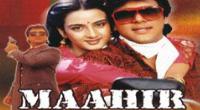
Mahal (1969) Full HD Movie Download
.jpg)
Manoranjan (1974) Full HD Movie Download
.jpg)
Aakhri Adalat Full HD Movie Download

Mylari Full HD Movie Download
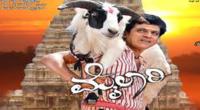
Krishnan Marriage Story Full HD Movie Download

Family Full HD Movie Download

Kadaladu Vadaladu Full HD Movie Download

Sagai (1951) Full HD Movie Download
.jpg)
Sri Raja Rajeshwari (Telugu) Full HD Movie Download
.jpg)
Paalu Neellu Full HD Movie Download
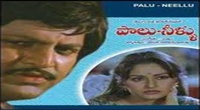
Rajakumari Full HD Movie Download
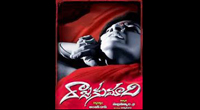
Maa Intayana katha Full HD Movie Download
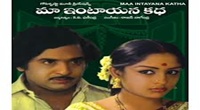
Maha Purushudu Full HD Movie Download
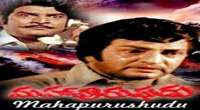
Maha Manishi Full HD Movie Download
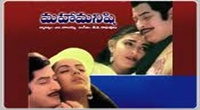
Mannan Full HD Movie Download
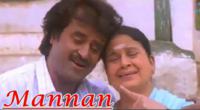
Luv Ka The End Full HD Movie Download

Aurangzeb (2013) Full HD Movie Download
.jpg)
Fanaa Full HD Movie Download

Download latest Movie from bollywood
- 1> baaghi 3
- 2> THE SKY IS PINK MOVIE FULL STORY AND REVIEW
- 3> Luka Chuppi
- 4> TO ALL THE BOYS I’VE LOVED BEFORE
- 5> Kabir Singh
- 6> Street Dancer 3D
- 7> Simmba
- 8> Gone Girl
- 9> The Girl Who Lived
- 10> Ludo
- 11> DILWALE DULHANIA LE JAYENGE
- 12> GUILTY
- 13> The Godfather
- 14> Adventures of Rusty
- 15> Sooryavanshi
- 16> Satyameva Jayate 2
- 17> Thappad
- 18> Bhool Bhulaiyaa 2
- 19> KGFChapter 2
- 20> Mardaani 2
- 21> Pinjar
- 22> Shivaji maharaj
- 23> Ek Villian 2
- 24> Hungama 2
- 25> Divergent
- 26> Mumbai Saga
- 27> The Internship
- 28> HIT (telugu)
- 29> Panga
- 30> The perfect date
- 31> 16 December
- 32> Gopala Gopala (Telugu)
- 33> Brahmastra
- 34> Gangubai Kathiawadi
- 35> Manmadhudu
- 36> Nenu local
- 37> Mahanati
- 38> Shatamanam bavathi
- 39> Lagaan
- 40> After
- 41> MOM
- 42> Shamshera
- 43> Raguvaran BTech
- 44> Khakee
- 45> The villain
- 46> OM
- 47> Mr. perfect
- 48> Bueatifull mind
- 49> Hichki
- 50> Gabbar Singh
- 51> Jogi
- 52> Before Sunrise
- 53> Before Sunset
- 54> Before Midnight
- 55> The Big Bull
- 56> Top Gun: Maverick
- 57> The Purge
- 58> The Sky is Pink
- 59> Laxmmi Bomb
- 60> Sadak 2
- 61> Sufna
- 62> Prithviraj
- 63> PK
- 64> Coolie No 1(2020)
- 65> Black Widow
- 66> Dear Zindagi
- 67> Dil Bechara
- 68> PHIR HERA PHERI
- 69> WAR
- 70> Dostana
- 71> RRR: Roudram Ranam Rudhiram
- 72> Maidan
- 73> Dabbang 3
- 74> Chhalaang
- 75> life as we know it
- 76> SherShaah
- 77> Sandeep Aur Pinky Faraar
- 78> Event Horizon
- 79> 83
- 80> Radhe: Your Most Wanted Bhai
- 81> Gunjan Saxena: The Kargil Girl
- 82> Mr India
- 83> Vivah
- 84> Anokha Bandhan
- 85> Ghost
- 86> Bhoot: Part One - The Haunted Ship
- 87> Haseen Dilruba
- 88> Laal Singh Chaddha
- 89> Qismat
- 90> Rajput
- 91> Drive
- 92> Dil Chahta Hai
- 93> Dil Ki Baazi
- 94> Dil Ka Rishta
- 95> Teesri Manzil
- 96> Dil
- 97> Love Aaj Kal
- 98> Khaali Peeli
- 99> Bunty Aur Babli 2
- 100> Atrangi Re
- 101> Gulabo Sitabo
- 102> Jodi
- 103> Suraj Pe Mangal Bhari
- 104> Deewana
- 105> Attack
- 106> Sardar Udham Singh
- 107> Toofan
- 108> THE LOVEBIRDS
- 109> Jersey
- 110> Ginny Weds Sunny
- 111> Thalaivi
- 112> Shiddat
- 113> Angels vs Zombies
- 114> Koi Mil Gya
- 115> Thank God
- 116> Bhuj: The Pride of India
- 117> Hum Aapke Hain Kaun
- 118> The Platform
- 119> Bird Box
- 120> Roohi Afzana
- 121> Torbaaz
- 122> Nikamma
- 123> World War Z
- 124> Extraction
- 125> Train to Busan
- 126> Life of Pi
- 127> SHAADI MEIN JROOR AANA
- 128> Himmat Aur Mehnat
- 129> To All The Boys: P.S. I Still Love You
- 130> Mimi
- 131> Good Newwz
- 132> Shubh Mangal Zyada Saavdhan
- 133> Raabta
- 134> Harry Potter and the Philosopher's Stone
- 135> Harry Potter and the Chamber of Secrets
- 136> Chhapaak
- 137> War of the Worlds
- 138> Harry Potter and the Prisoner of Azkaban
- 139> Harry Potter and the Goblet of Fire
- 140> MURDER MYSTERY
- 141> Shakuntala Devi
- 142> Bachchan Pandey
- 143> Jayeshbhai Jordar
- 144> Sheer Qorma
- 145> Saina
- 146> 'O' Pushpa I hate tears
- 147> Kedarnath
- 148> MS Dhoni The Untold Story
- 149> Chhichhore
- 150> Badhaai Ho
- 151> Unstoppable
- 152> Oz the Great And Powerful
- 153> The Girl on the Train
- 154> Haathi Mere Saathi 2020
- 155> The Conjuring: The Devil Made Me Do It
- 156> Gandhi Se Pehle Gandhi
- 157> The Song of Scorpions
- 158> Srimanthudu
- 159> Hello Guru Prema Kosame
- 160> Beauty and The Beast
- 161> Black Panther
- 162> Charlie and the Chocolate Factory
- 163> Bole Chudiyan
- 164> Fidaa
- 165> Duvvada Jagannadham
- 166> Bruce Lee: The Fighter
- 167> Hyper
- 168> Yaara
- 169> Red (2020)
- 170> Shivam
- 171> That Is Mahalakshmi
- 172> Nishabdham
- 173> Aashram 2020 web series
- 174> Laxmii
- 175> Mismatched
- 176> STUDENT OF THE YEAR 2
- 177> NAIL POLISH
- 178> Ramprasad Ki Tehrvi
- 179> KAAGAZ
- 180> 12 o Clock
- 181> The Power
- 182> bolo hau
- 183> Tribhanga
- 184> JAMUN
- 185> Madam Chief Minister
- 186> Maasaab
- 187> Aadhaar
- 188> Tanhaji
- 189> Bhaagi 3
- 190> Bhootnath
- 191> MALANG
- 192> Jai Mummy Di
- 193> Haathi Mere Saathi 2021
- 194> Shakeela
- 195> Unpaused
- 196> Annayya
- 197> Vamsoddharakudu
- 198> Mrugaraju
- 199> Narasimha Naidu
- 200> Sankranti
- 201> Manasu Maata Vinadhu
- 202> Anjaane
- 203> Apaharan
- 204> Bachke Rehna Re Baba
- 205> Bewafaa
- 206> Roohi
- 207> Radhe
- 208> Zindagi Khoobsoorat Hai
- 209> Yeh Mohabbat Hai
- 210> Yeh Kya Ho Raha Hai?
- 211> The Tomorrow War
- 212> DehradunDiary
- 213> Meri Shaadi Karaoo
- 214> Matruu Ki Bijlee Ka Mandola
- 215> No One Killed Jesica
- 216> Aag Ka Goola
- 217> Eight Million Dollars
- 218> Three Hundred
- 219> Cats and Dog
- 220> Decoy
- 221> Gold Rush
- 222> You Have Got Mail
- 223> Final Destination three
- 224> Tofan
- 225> Jungle
